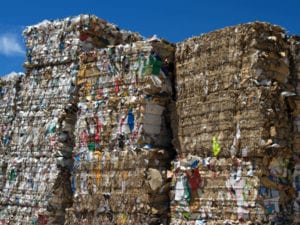One of the planet’s most pressing problems is the incorrect disposal of waste. About 2.01 billion tonnes of municipal solid waste is generated annually, according to the World Bank, of which at least 33% of that isn’t managed in an environmentally safe manner.
With the majority of municipal solid waste coming from homes, Global Recycling Day on 18 March is a good time for consumers to take stock of their recycling habits – and of paper recycling in particular. “Wood-based products such as paper are rapidly gaining a reputation for being the ultimate renewable,” says Anele Sololo, general manager of RecyclePaperZA, the paper recycling association of South Africa. “And contrary to popular belief, recycling paper is not about saving trees. We encourage recycling because paper products actually store carbon for the length of their lives. “While trees are growing, they absorb carbon dioxide from the atmosphere. They’re so efficient at this that about half the dry weight of wood is carbon. And that carbon stays locked up in the wood – even when it’s turned into construction materials, furniture or even paper. If you recycle and reuse those products, the carbon stays locked up. It’s only released if the wood rots, or is burnt. So recycling any and all paper possible, is a great way to do your bit to protect the environment.” Good garbage habits There are some basic practices to keep in mind when recycling, says Sololo: keep recyclable paper clean and dry, separate it from other recyclables and wet waste, preferably in its own container, and then either drop it off at a recycling centre, or subscribe to one of the programmes or companies that collects recyclables. “And make sure everyone in your home knows what recycling is – the kids, your domestic helper.” “There are often drop-off centres at local shopping centres, or you can support a local community centre, church or school,” Sololo suggests. “Some have paper recycling programmes as fundraising drives, so you can help the environment and a cause close to your heart at the same time.“You can even keep recyclables aside for the informal waste collectors in your neighbourhood,” she continues. “Simply put them out in a separate bag when it’s bin day. This increases the quality of the recyclables, allowing the collector to earn a little more and save time.”
What paper should you be recycling? But many consumers are still confused by which kinds of paper can and can’t be recycled, and what to do with paper products they’ve set aside for replacing. Here’s a list PAMSA has compiled of products that can be recycled:- Magazines and brochures, including glossy varieties
- Newspapers
- Office paper (preferably not shredded), envelopes
- Cardboard boxes of any kind – dry food, cosmetic and medicine boxes, roll cores, packing cartons (flattened)
- Books (if they can’t be donated or are obsolete)
- Paper giftwrap
- Milk, beverage and food cartons (liquid board packaging)
- Paper cups
- Used paper plates, disposable nappies, tissues and toilet paper
- Wax-coated, foil-lined or laminated boxes (unless stipulated)
- Used cement bags
- Used dog food bags
- Foil gift wrapping
- Carbon paper
- Laminated paper (including laminated office paper)








